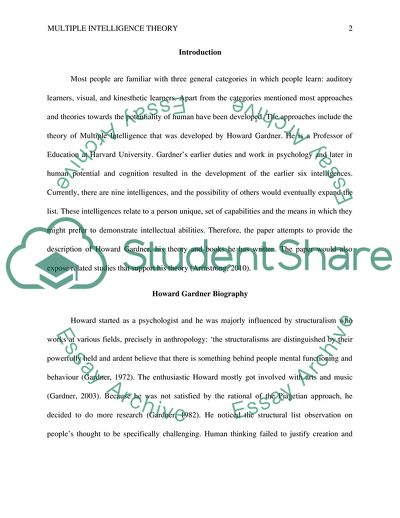Cite this document
(Howard Gardeners Multiple Intelligence Theory Literature review Example | Topics and Well Written Essays - 1250 words, n.d.)
Howard Gardeners Multiple Intelligence Theory Literature review Example | Topics and Well Written Essays - 1250 words. https://studentshare.org/education/1860578-howard-gardners-multiple-intelligences-theory
Howard Gardeners Multiple Intelligence Theory Literature review Example | Topics and Well Written Essays - 1250 words. https://studentshare.org/education/1860578-howard-gardners-multiple-intelligences-theory
(Howard Gardeners Multiple Intelligence Theory Literature Review Example | Topics and Well Written Essays - 1250 Words)
Howard Gardeners Multiple Intelligence Theory Literature Review Example | Topics and Well Written Essays - 1250 Words. https://studentshare.org/education/1860578-howard-gardners-multiple-intelligences-theory.
Howard Gardeners Multiple Intelligence Theory Literature Review Example | Topics and Well Written Essays - 1250 Words. https://studentshare.org/education/1860578-howard-gardners-multiple-intelligences-theory.
“Howard Gardeners Multiple Intelligence Theory Literature Review Example | Topics and Well Written Essays - 1250 Words”. https://studentshare.org/education/1860578-howard-gardners-multiple-intelligences-theory.


